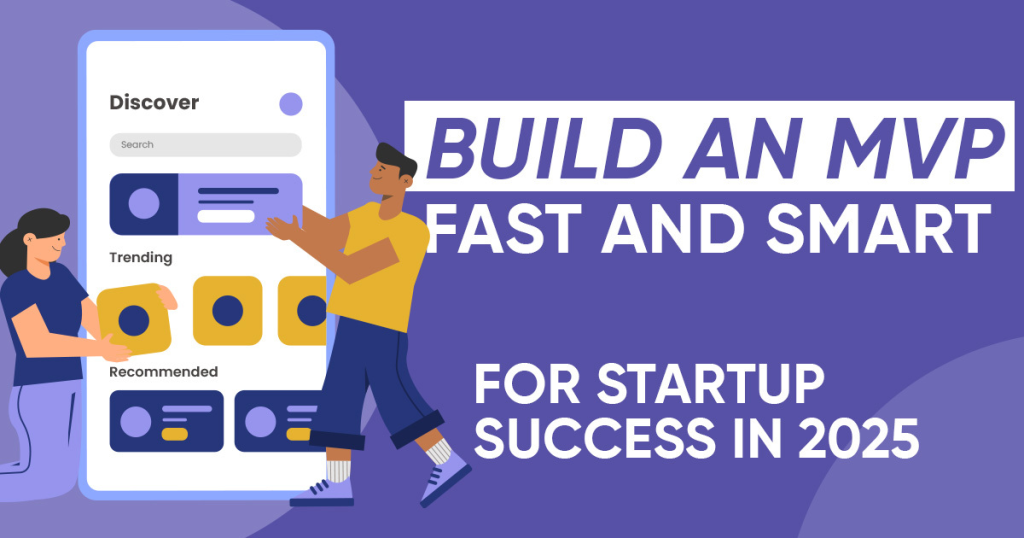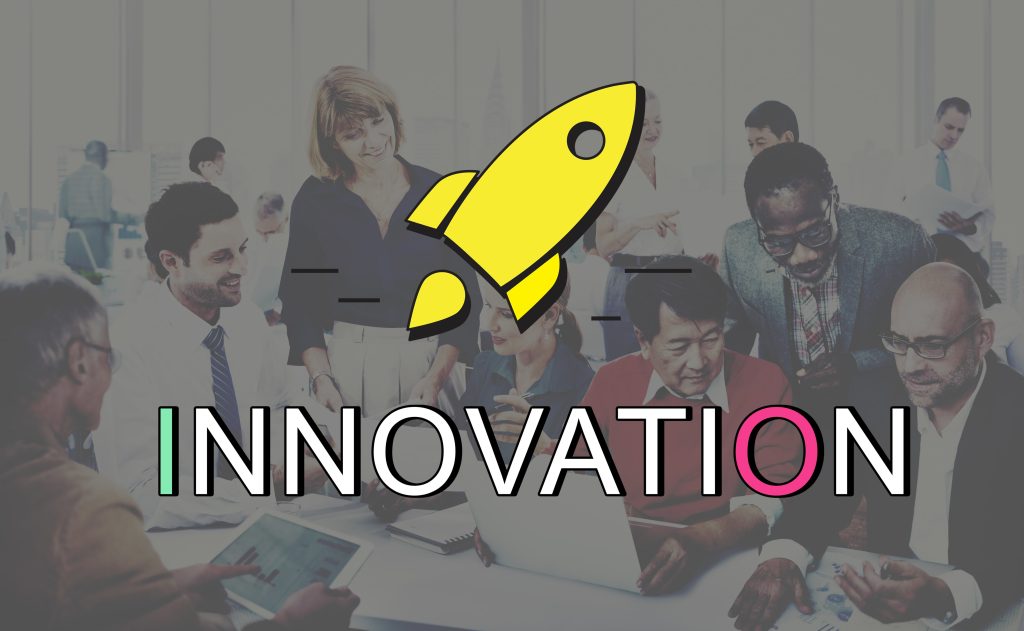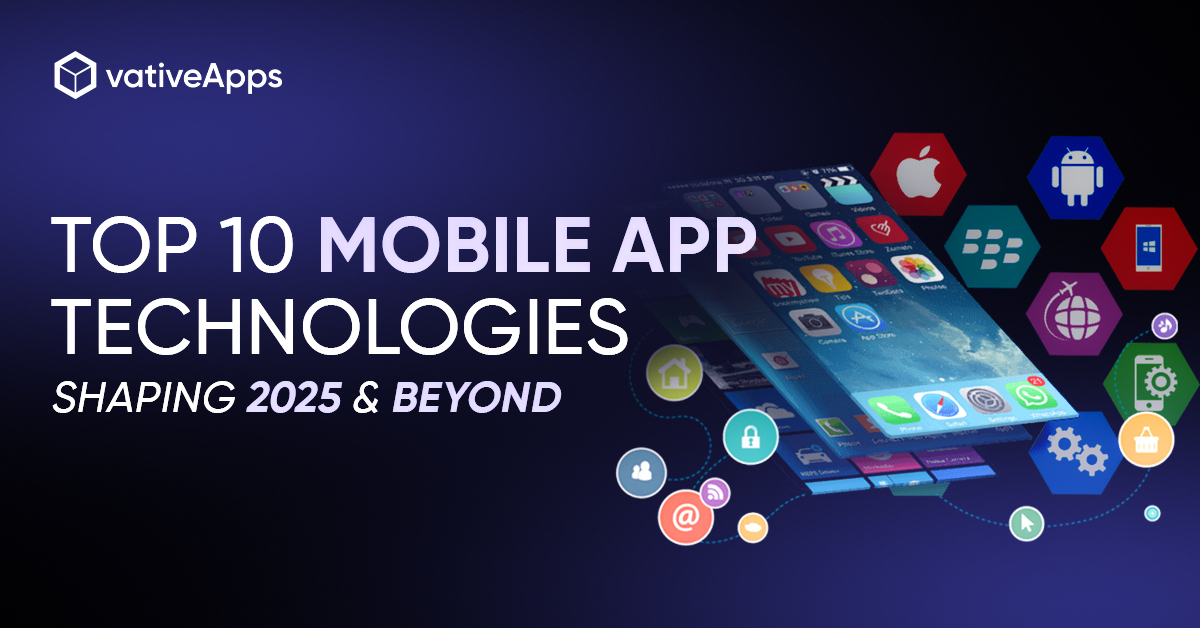
Launching a product that no one wants is not what any founder hopes for. Even with demand, however, around 29% of firms fail due to financial constraints. In order to prevent both situations. That’s where Minimum Viable Products (MVPs) come in — they’ve become a go-to strategy for founders and tech entrepreneurs to validate ideas, save resources, and increase the chances of long-term success.
The products starting from an MVP are now the most trendy and useful apps such as Facebook, Twitter – X, Airbnb, Amazon, Uber, Etsy, Spotify, Dropbox, Groupon and Zappos.
But here’s the real question:
How is building an MVP different from traditional app or software development?
Here is the step-by-step guide to creating an MVP the smart way if you have gotten an innovative solution.
Why does any Startup Build an MVP First?

A risky move but launching a startup is so exciting. You don’t want to spend months or years building a full product only to realize nobody needs it, or worse, you have burned through your budget.
Building an MVP – Minimal Viable Product is first a game changer here is the reason:
Validate Your Idea Before Going All In
An MVP lets you test your concept with real users. Instead of relying on assumptions, you get solid feedback on whether your idea solves an actual problem.
Pick the Right Tech from the Start
Early launches help you figure out which programming languages, frameworks, and platforms work best for your product in the real world.
Protect Your Cash Flow
With an MVP, you can start generating revenue early. Profits can then be reinvested into scaling and improving your product — instead of draining your bank account.
Get to Market Faster
Trends move fast. An MVP helps you launch while your idea is still relevant, giving you a head start over competitors.
Reduce Risk While Increasing Learning
Every MVP release is a learning opportunity. The quicker you launch, the faster you can collect insights and make improvements.
Bottom line: An MVP is your startup’s safety net. It minimizes risk, speeds up learning, and sets the foundation for a product that can actually succeed.
8 Easy Steps to Build an MVP
For the benefit of all stakeholders, including investors, venture capitalists, business analysts, product developers, and those whose ideas are still in the early stages, we have divided the MVP development process into eight distinct parts.
Market Research
Having a great idea is exciting — but it’s not a guarantee of success. The harsh truth is that even the most innovative concepts can fail if they don’t solve a real problem for a specific audience. That’s why market research is the first and most important step in your MVP journey.

Think of it this way: building without research is like setting sail without a map — you might get lucky, but the odds aren’t in your favor.
Understand Your Target Audience
Start by defining exactly who you’re building for. The clearer your target audience profile, the more likely your MVP will hit the mark. Consider factors like:
- Age group – Is your product for Gen Z, millennials, or a professional middle-aged audience?
- Location – Are you targeting a global audience or focusing on a specific country or city?
- Interests and hobbies – What do they care about? What activities take up most of their time?
- Income level – Can they afford your product, and how much are they willing to pay?
- Daily challenges – What problems do they face that your product can solve?
Use Multiple Research Methods
Don’t rely on guesswork. Validate your idea through multiple channels:
- Surveys and polls – Quick, inexpensive, and effective for gathering large amounts of data.
- Social listening – Monitor conversations on platforms like Twitter, LinkedIn, Reddit, or Quora to uncover recurring pain points.
- Competitor analysis – Study similar products to see what works, what doesn’t, and where gaps exist.
- One-on-one interviews – Talking directly to potential users gives you deeper insights than any spreadsheet ever could.
Spot Market Trends Early
Understanding where the market is headed can give you a competitive edge. For instance, if you’re building a mobile app, industries like healthcare, fitness, gaming, edtech, and entertainment are experiencing explosive growth. Identifying a rising trend and entering early can significantly increase your chances of success.
The Goal of Market Research
Your aim is simple: prove there’s a real demand for your idea before you write a single line of code. By validating the problem, identifying your audience, and spotting market gaps, you set your MVP up for a much higher chance of traction and profitability.
Identify Your Value Proposition
Once you’ve researched your market and clearly defined your audience, the next step is figuring out why your product should exist in the first place. This is where you compare your idea to existing solutions and pinpoint the gap only you can fill.
Think of it like walking into a crowded marketplace — there are dozens of stalls selling similar products, but people will stop at yours if it offers something they truly want and can’t get elsewhere.

Define Your USP (Unique Selling Proposition)
Your answers will form your USP — the one thing that makes your product impossible to ignore. A strong USP can be:
- Lower cost without sacrificing quality.
- Innovative features that competitors haven’t thought of yet.
- Superior performance — faster, more reliable, more intuitive.
- Personalized experiences that make users feel valued.
Back It Up with Evidence
It’s not enough to say your product is “better” — you need proof. Look at competitor reviews, forums, and social media complaints to identify exactly where they’re falling short. These pain points become your opportunities.
For example:
- If people complain about long delivery times, your edge could be speed.
- If users find existing apps cluttered and hard to navigate, your advantage could be simplicity.
- If customers are frustrated with high prices, your win could be affordability without cutting corners.
Why This Step Matters for Your MVP
Your value proposition is the heart of your MVP. It guides which features you prioritize, how you market your product, and even the tone of your brand. Without it, you risk blending into the crowd instead of standing out.
Select Core Features
Once you know your value proposition, it’s time to decide which features your MVP absolutely needs to solve your user’s main problem. Focus on the essentials — the features that directly deliver value and prove your idea works.
Resist the temptation to add “nice-to-have” extras at this stage. Every additional feature means more time, more cost, and more complexity.
Remember:
- The “M” in MVP stands for Minimum — keep it lean and simple.
- The “V” stands for Viable — ensure it actually works, feels complete, and provides real value to users.
Your goal here is to build just enough for people to try, love, and give feedback on — without slowing down your launch.
Design a Simple, Effective UI/UX
Your MVP’s design should be clean, intuitive, and laser-focused on the actions that matter most. Keep the navigation straightforward so users can move from start to finish without confusion or unnecessary steps.
Use simple wireframes and clear user flows to map the journey, ensuring every screen serves a purpose.
The goal? A minimal interface that delivers maximum clarity, keeps users engaged, and lets your core features shine.

Develop the MVP
Now comes the stage where your idea turns into something tangible. This is where code is written, designs are implemented, and your concept starts to take shape.
Whether you have an in-house team, work with a dedicated remote team, or outsource the entire build, one thing is non-negotiable — stay actively involved. Your MVP should reflect your vision, and that only happens when you’re part of the process.
Set clear milestones, review progress regularly, and make sure each feature works exactly as intended. Keep communication open between developers, designers, and stakeholders so there are no surprises down the line.
At this stage, speed matters — but not at the expense of quality. Aim for a build that’s lean, functional, and ready for real users without cutting corners that could hurt the first impression.
Test Before You Launch
A broken MVP is worse than no MVP at all — first impressions matter, and if your product fails early, users are unlikely to give it a second chance.
Before you release it to the world, test thoroughly for:
- Usability – Is it easy and intuitive to use?
- Performance & loading speed – Does it run smoothly without delays?
- Security & data privacy – Can users trust their information is safe?
- Device compatibility – Does it work seamlessly across devices and platforms?
Run unit tests, functional tests, and penetration tests to catch glitches before your users do. A well-tested MVP not only builds trust but also sets the stage for positive reviews and long-term adoption.
Launch Your Own MVP
To launch your MVP there are two technical ways – Hard Launch or Soft Launch

Soft Launch
A soft launch is when a product is released with beta testing procedures in place to help developers and companies determine the true market demand for their product. Dropbox used a video to introduce their MVP, for example.
Hard Launch
A full-featured product is released to a large audience segment in your key market during a hard launch. It has a minimum of 95% of the features you intended for your finished project.
For MVPs, a soft launch is usually best. It gives you time to gather data, test in real conditions, and refine before scaling.
Collect Feedback & Improve
Once your MVP is in the hands of real users, the real learning begins. This stage is all about listening, observing, and adapting.
Gather feedback through surveys, in-app analytics, user interviews, and reviews. Pay attention to how people actually use your product versus how you thought they would — their behavior often reveals insights that raw data alone can’t.
Follow a continuous improvement cycle: Build → Measure → Learn → Repeat. Every update should be informed by actual user needs, not assumptions.
Over time, you can:
- Add new features that users are asking for.
- Refine or remove features that aren’t being used.
- Enhance performance for speed, stability, and scalability.
- Test new monetization strategies or pricing models.
The MVP process doesn’t end at launch — it evolves. By treating your product as a living, growing solution, you increase its chances of staying relevant and competitive in a fast-moving market.
Conclusion
MVPs aren’t just a “testing phase” — they’re one of the smartest ways to build a product people actually want. They give you the chance to validate your concept, understand your audience, and fine-tune your solution before making big investments in time, money, and resources.
By starting lean, you reduce risk while speeding up learning. You avoid building unnecessary features, focus on what truly matters to your users, and create a product that has a clear path to growth. Most importantly, you put yourself in a position to adapt quickly when the market changes — something every successful startup must master.

At vativeApps, we’ve seen firsthand how the right MVP approach can transform an idea into a market-ready product with real traction. From concept validation to launch, our team works alongside founders to design, develop, and refine MVPs that not only survive but thrive in competitive markets.
If you have a bold idea, don’t wait for the “perfect” version — start with the right MVP and let real-world feedback guide your path to success.


